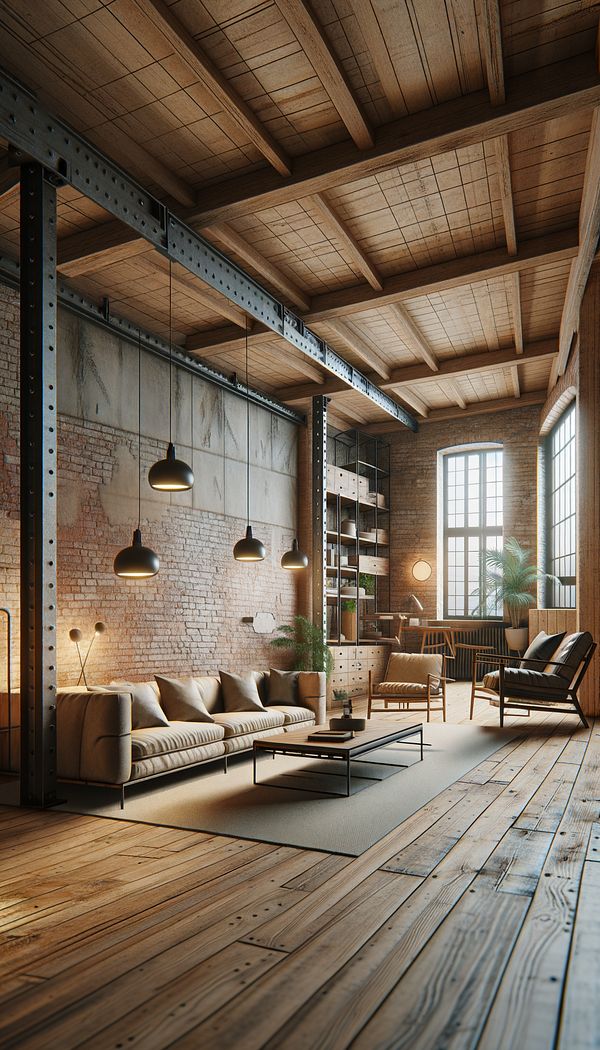What is Industrial?
Industrial refers to a design style that draws inspiration from old factories and industrial spaces.
Description
The Industrial interior design style is characterized by its utilitarian spirit and rough, unfinished look. This style celebrates the beauty of raw materials, exposed structures, and architectural elements that are typically hidden away. It creates an open and spacious atmosphere by incorporating elements such as exposed brick walls, concrete floors, metal fixtures, and wooden beams.
Industrial design often features a monochromatic color palette with shades of gray and brown, accented by the natural color of the materials used. The use of vintage or reclaimed items, such as old machinery parts, pipes, and light fixtures, adds authenticity and a sense of history to the space. Lighting in this style tends to be simple and functional, with pendant lights or Edison bulbs being popular choices.
Furniture in the Industrial style is typically sturdy and functional, with an emphasis on simplicity and durability. Leather, distressed wood, and metal are common materials that help to maintain the rustic and utilitarian aesthetic. Open shelving and minimalistic decor further contribute to the spacious and airy feel of industrial interiors.
Usage
Industrial design can transform a loft, warehouse, or commercial space into a stylish and functional living area, office, or retail space. It is also commonly incorporated into residential interiors, often in urban settings, to create a modern, edgy aesthetic.
FAQs
-
Is Industrial design expensive to implement?
Implementing an Industrial design can vary in cost, based on sourcing authentic pieces and materials. Reclaimed and repurposed items often reduce costs, making it potentially budget-friendly.
-
Can Industrial design be combined with other styles?
Yes, Industrial design can be blended with other styles such as modern, Scandinavian, or rustic for a unique and personalized interior.
-
Is Industrial design suitable for any room?
While Industrial design is versatile, its raw and utilitarian nature is particularly suited for open-plan spaces, kitchens, living rooms, and home offices.
Practical Application
To incorporate Industrial design into your space, start with a neutral color palette and add pieces that highlight raw materials such as wood and metal. Expose structural elements where possible, and opt for functional, simple furniture. Accessories should be minimal, emphasizing quality and authenticity.
-
Architectural Elements199 articles
-
Design Styles478 articles
-
Materials & Textiles360 articles
-
Furniture Types599 articles
-
Lighting111 articles
-
Art GlassArt glass is a decorative material primarily used for its aesthetic appeal.
-
Café CurtainA café curtain is a half-window curtain that offers privacy while letting in light.
-
CeramicCeramic refers to objects made from clay that have been shaped and then hardened by heat.
-
Cheval MirrorA tall, freestanding mirror mounted on a stand with two supporting posts.
-
Bonnet TopA decorative top piece on furniture that resembles the shape of a bonnet.
